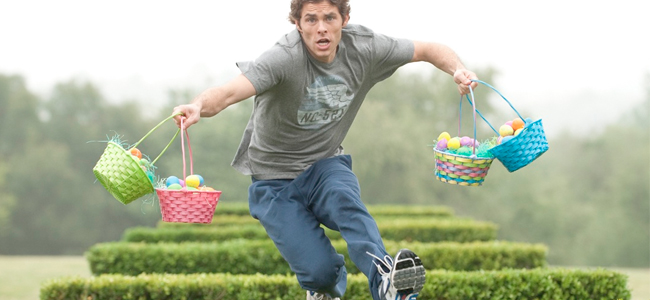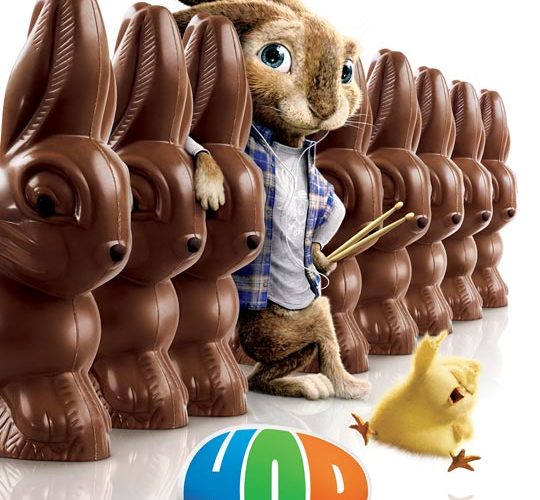
Directed by Tim Hill (Alvin and the Chipmunks), this live-action/animated film is sugary sweet, and nothing great ever comes out of an overload of cuteness. The animation (integrated in a live-action setting) is excellent, but the plotline is quite thin. These two factors, however, balance Hop out to be an average fun film for the family.
E.B (Russell Brand) is an anthropomorphic bunny who aspires to be a drummer, but is predetermined to be the Easter Bunny. E.B runs away from his home, Easter Island (because where else would the origins of Easter Bunny come from?), after fighting with his father, the current Easter Bunny (Hugh Laurie), about his future. He unexpectedly meets Fred O’Hare (James Marsden), who also has similar problems about his future and father.
E.B and Fred do not initially get along with each other, but of course, become friends as they spend time together. While E.B is gone, the future of Easter (which has extreme resemblance to the commercialized Christmas and its themes, i.e. the Easter Bunny’s sleigh) is at stake. Carlos (Hank Azaria), a chick who is second-in-command of Easter, tries to decide the fate of Easter to his favor, but both Fred and E.B soon resolve the conflict.
Hop remained steady until it wavered down a mediocre slope from the climax of the film to its end. The last quarter got a little too ridiculous and cheesy, adding unintentional humor (which may be good or bad; it depends on what kind of comedy you like). The ambivalence of this film is also shown in the film’s characters; they are one-dimensional, but are at least funny.
One can see the skill in the film’s animation; however, the level of skill depends on the environment where the animation is. The fully animated scenes are great for children, but I thought that these scenes (Easter candy factory scenes) were too vibrant and full of eye-candies (sorry), causing a figurative sensory overload. The live-action/animated sequences had a pleasant equilibrium of colors and textures. The animated characters are adorable, and also have been developed remarkably.
Opposing qualities often cancel each other out, making this film average and typical. There are genuinely humorous moments (delightful art history references), tacky moments (the ending), and moments that ineffectively combine the two (Hugh Hefner’s appearance in a Playboy Bunny scene and David Hasselhoff‘s scenes). If you decide to see this film, be sure to finish watching the end credits to feel less offended about an early scene in Hop.


